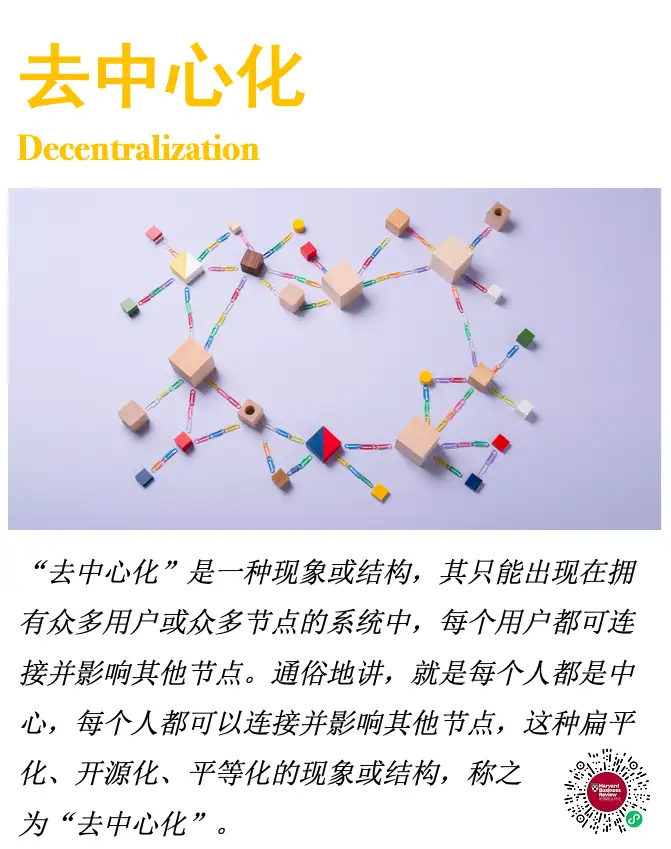
「释义」
“去中心化”是一种现象或结构,其只能出现在拥有众多用户或众多节点的系统中,每个用户都可连接并影响其他节点。通俗地讲,就是每个人都是中心,每个人都可以连接并影响其他节点,这种扁平化、开源化、平等化的现象或结构,称之为“去中心化”。
同时“去中心化”是区块链的典型特征之一,其使用分布式储存与算力,整个网络节点的权利与义务相同,系统中数据本质为全网节点共同维护,从而区块链不再依靠于中央处理节点,实现数据的分布式存储、记录与更新。而每个区块链都遵循统一规则,该规则基于密码算法而不是信用证书,且数据更新过程都需用户批准,由此奠定区块链不需要中介与信任机构背书。
「应用场景」
尽管设想的是去中心化,但采矿的高成本导致了实践中相当多的共识集中化。为了分担花费资源但未能在竞争中获胜的风险,矿工群体组成了矿池。这导致只有少数矿池验证大多数交易。同时,矿池向矿工收取参与费用,大的矿池收费更高。因此,他们吸引的矿工更少,增长更慢。只有一个矿池的环境最终不太可能完全集中化。因此,虽然在实践中实现共识比设想的更集中,但仍然保留了一定程度的分散性。
Despite envisioned decentralization, the high cost of mining has led to considerable centralization of consensus in practice. In order to share the risk of spending the resources but failing to win the competition, groups of miners form mining pools. This resulted in just a few mining pools validating most transactions. At the same time, mining pools charge miners for participation, with larger mining pools charging more. Therefore, they attract fewer miners and grow more slowly. It is unlikely that the environment would end up fully centralized with just one mining pool. So while in practice achieving consensus is more centralized than it was envisioned, a certain degree of decentralization is still retained.
Will We Realize Blockchain’s Promise of Decentralization?
汉娜·哈拉布达(Hanna Halaburda)克里斯托弗·穆勒(Christoph Mueller-Bloch)| 文
马冰仑 丨编辑

